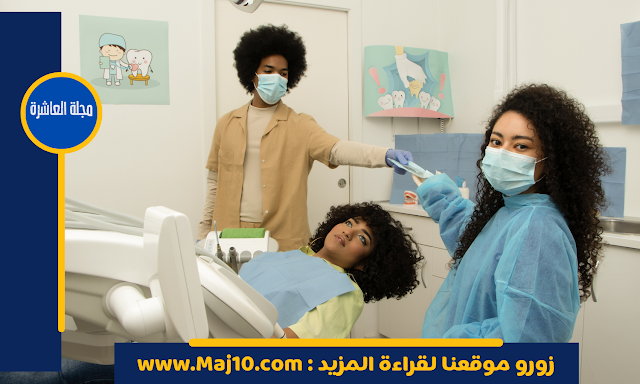Wisdom Teeth: Everything You Need to Know About These Extra Teeth
When we talk about teeth, wisdom teeth seem to steal the spotlight. You know that awkward time when these molars make their dramatic entrance in the back of your mouth, right? Wisdom teeth are pretty mysterious if you ask me. Some people swear they’re nothing but trouble, while others have no idea they even exist. So, what's the deal with these “extra” teeth? And do we really need them? Let’s dive into all things wisdom teeth and unravel the mysteries behind them. Buckle up!
What Are Wisdom Teeth Anyway?
Let’s start by answering the obvious. Wisdom teeth are the last set of molars that typically pop up in your late teens or early twenties, usually between 17 and 25. They’re like that surprise guest who shows up late to the party. Most folks end up with four wisdom teeth, but some are lucky enough to have fewer—or none at all. These teeth hang out way back in the corners of your mouth.
Here’s a fun fact for you! Back in ancient times, our ancestors had larger jaws and needed these extra molars to chew tough, fibrous foods like roots and raw meat. But now? We’ve evolved with smaller jaws and softer diets, so wisdom teeth often just cause problems. It’s like having an outdated gadget you don’t really need anymore.
Do All Wisdom Teeth Need to Be Removed?
This is one of the big questions people love to ask. The answer? It depends. Wisdom teeth removal isn't a one-size-fits-all situation. Some wisdom teeth grow in perfectly fine, without causing any issues. But for a lot of people, it’s a different story.
If your wisdom teeth decide to come in at an angle or they get stuck under the gum (a situation called "impaction"), things can go south quickly. Impacted teeth can lead to pain, swelling, and even infection. Sounds fun, right? And if your mouth just doesn’t have enough room for these extra teeth, they can push against your other teeth, leading to crowding or even damage. Ouch!
In these cases, dentists usually recommend yanking them out before they cause any more trouble. It’s always better to deal with them sooner rather than later.
Signs You Might Have Wisdom Teeth Problems
Wondering if your wisdom teeth are acting up? Here are some common red flags:
- Pain or tenderness in the back of your mouth
- Swollen or bleeding gums
- Jaw stiffness or difficulty opening your mouth
- Bad breath (yep, that’s a thing)
- Swelling around your jaw or cheeks
If you're nodding your head to any of these, it might be time to chat with your dentist. Trust me, ignoring wisdom teeth issues only leads to more headaches down the road.
The Wisdom Teeth Removal Process
Alright, so you’ve decided to get those pesky wisdom teeth out. What now? Let’s talk about the procedure—don’t worry, it’s not as scary as it sounds!
Before the actual removal, your dentist will take X-rays to see what’s going on beneath the surface. If the teeth are impacted, they might need to make a small incision to get them out. Most people will be given some sort of anesthesia, so you won’t feel much, if anything, during the procedure. It’s like a quick nap, and when you wake up, boom—the teeth are gone.
Afterwards, you might feel a little sore and swollen for a few days, but that’s totally normal. Your dentist will likely give you some aftercare instructions, like avoiding hard foods, not using a straw (suction can mess up the healing process), and keeping the area clean. Follow these rules, and you’ll be back to your usual self in no time.
Can Wisdom Teeth Grow Back?
Here’s a question that pops up more often than you might think: can wisdom teeth grow back after they’ve been removed? Spoiler alert—no, they don’t grow back. Once they’re out, they’re out for good.
That said, some people might have extra wisdom teeth called "supernumerary teeth." Yeah, it sounds like something out of a superhero movie, but it’s just a fancy term for having more than four wisdom teeth. If you have these super molars lurking in the wings, they could come in after the first set is removed. But don’t worry, this is pretty rare.
Taking Care of Your Teeth After Wisdom Teeth Removal
After getting your wisdom teeth out, your mouth needs a little TLC to heal properly. Here are a few quick tips to make sure things go smoothly:
- Stick to soft foods like yogurt, mashed potatoes, and smoothies
- Stay away from spicy or hot foods that could irritate the area
- Rinse your mouth with salt water to keep it clean
- Avoid alcohol and tobacco—these can slow down the healing process
And remember, if you notice anything unusual (like excessive pain, swelling, or bleeding), give your dentist a call ASAP. It’s better to be safe than sorry when it comes to your teeth.
Why Do Some People Keep Their Wisdom Teeth?
Not everyone rushes to have their wisdom teeth removed. Some folks are lucky enough to have plenty of room in their mouths for these late bloomers, and they don’t experience any discomfort or crowding. If your wisdom teeth come in straight and healthy, and they’re not causing any problems, your dentist might suggest leaving them alone.
However, even if your wisdom teeth aren’t giving you any trouble right now, it’s still important to keep an eye on them. Regular check-ups and X-rays will help catch any potential issues before they become a big deal.
FAQs About Wisdom Teeth
Why do wisdom teeth come in so late?
Wisdom teeth typically develop later because they were historically needed once our ancestors’ other teeth wore down from chewing tough food. Nowadays, we just don’t need them as early—or at all.
Will wisdom teeth always hurt when they come in?
Not necessarily! Some people never feel a thing. Others? Well, they might experience some discomfort or swelling, especially if the teeth are impacted.
How long does it take to recover from wisdom teeth removal?
Most people feel back to normal within a week. But full healing can take a few weeks, depending on how complicated the removal was.
Is wisdom teeth removal dangerous?
It’s a routine procedure, and while there are risks with any surgery, wisdom teeth removal is generally safe. Your dentist or oral surgeon will walk you through everything beforehand.
Can wisdom teeth cause other teeth to shift?
Yep, if there’s not enough space in your mouth, wisdom teeth can push against your other teeth and cause shifting or crowding.
Do all wisdom teeth need to be removed?
Nope! If they’re coming in straight, healthy, and not causing any issues, your dentist might suggest keeping them.
Wrapping It Up
Wisdom teeth might be the last to arrive to the teeth party, but they sure know how to make an entrance. Whether they’re causing chaos or slipping in unnoticed, it’s important to keep an eye on them. If they start giving you trouble, a quick chat with your dentist will help decide the best course of action. Remember, those third molars may be a thing of the past, but your dental health is always a priority.







.png)
.png)


.png)







